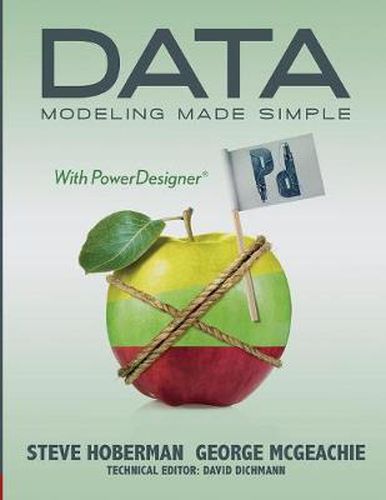Readings Newsletter
Become a Readings Member to make your shopping experience even easier.
Sign in or sign up for free!
You’re not far away from qualifying for FREE standard shipping within Australia
You’ve qualified for FREE standard shipping within Australia
The cart is loading…






This title is printed to order. This book may have been self-published. If so, we cannot guarantee the quality of the content. In the main most books will have gone through the editing process however some may not. We therefore suggest that you be aware of this before ordering this book. If in doubt check either the author or publisher’s details as we are unable to accept any returns unless they are faulty. Please contact us if you have any questions.
This book will provide the business or IT professional with a practical working knowledge of data modelling concepts and best practices, and how to apply these principles with PowerDesigner. You will build many PowerDesigner data models along the way, increasing your skills in first the fundamentals and later in the book the more advanced features of PowerDesigner. The book contains six sections: Section I introduces data modelling along with its purpose and variations. Also included is an explanation of the important role of a data modelling tool, the key features required of any data modelling tool, and an introduction to the essential features of PowerDesigner; Section II explains all of the components on a data model including entities, data elements, relationships, and keys, and describes how to create and manage these objects in PowerDesigner. Also included is a discussion of the importance of quality names and definitions for your objects; Section III dives into the relational and dimensional subject area, logical, and physical data models, and describes how PowerDesigner supports these models and the connections between them. Learn how to get information into and out of PowerDesigner, and improve the quality of your data models with a cross-reference of key PowerDesigner features with the Data Model Scorecard; Section IV contains a PowerDesigner workshop designed to consolidate everything for you; Section V focuses on additional PowerDesigner features (some of which have already been introduced) which make life easier for data modellers; Section VI discusses PowerDesigner topics beyond data modelling, including the XML physical model and the other types of model available in PowerDesigner; it also discusses the role of PowerDesigner in data management, using the DAMA Data Management Body of Knowledge (DAMA-DMBOK) framework.
$9.00 standard shipping within Australia
FREE standard shipping within Australia for orders over $100.00
Express & International shipping calculated at checkout
This title is printed to order. This book may have been self-published. If so, we cannot guarantee the quality of the content. In the main most books will have gone through the editing process however some may not. We therefore suggest that you be aware of this before ordering this book. If in doubt check either the author or publisher’s details as we are unable to accept any returns unless they are faulty. Please contact us if you have any questions.
This book will provide the business or IT professional with a practical working knowledge of data modelling concepts and best practices, and how to apply these principles with PowerDesigner. You will build many PowerDesigner data models along the way, increasing your skills in first the fundamentals and later in the book the more advanced features of PowerDesigner. The book contains six sections: Section I introduces data modelling along with its purpose and variations. Also included is an explanation of the important role of a data modelling tool, the key features required of any data modelling tool, and an introduction to the essential features of PowerDesigner; Section II explains all of the components on a data model including entities, data elements, relationships, and keys, and describes how to create and manage these objects in PowerDesigner. Also included is a discussion of the importance of quality names and definitions for your objects; Section III dives into the relational and dimensional subject area, logical, and physical data models, and describes how PowerDesigner supports these models and the connections between them. Learn how to get information into and out of PowerDesigner, and improve the quality of your data models with a cross-reference of key PowerDesigner features with the Data Model Scorecard; Section IV contains a PowerDesigner workshop designed to consolidate everything for you; Section V focuses on additional PowerDesigner features (some of which have already been introduced) which make life easier for data modellers; Section VI discusses PowerDesigner topics beyond data modelling, including the XML physical model and the other types of model available in PowerDesigner; it also discusses the role of PowerDesigner in data management, using the DAMA Data Management Body of Knowledge (DAMA-DMBOK) framework.